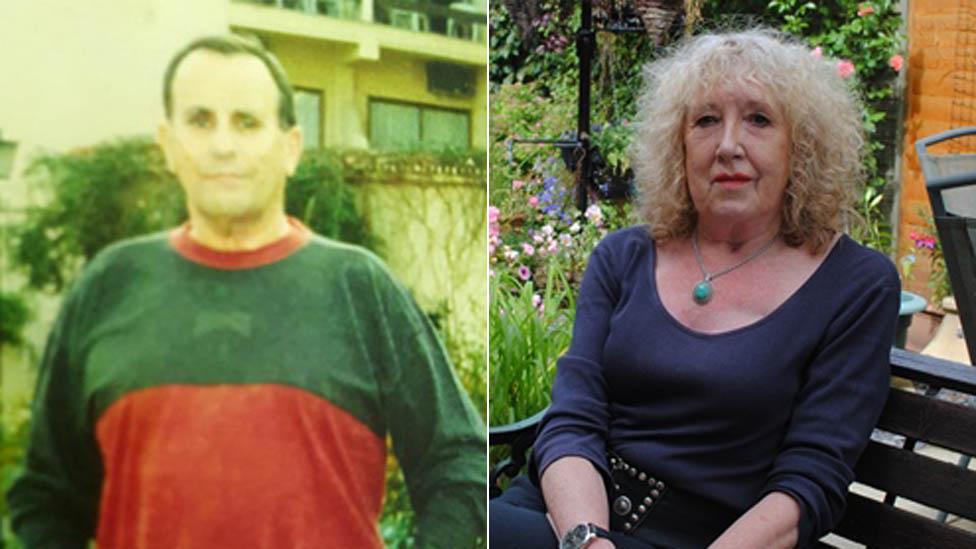How a skeleton prank led police to a body in plain sight
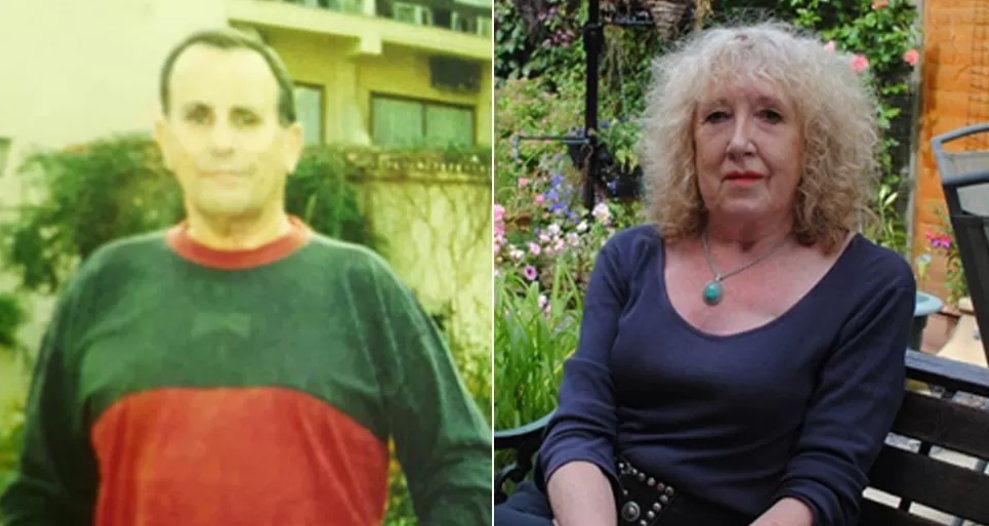
Leigh Sabine (right) had told friends that John Sabine (left) had left her many years earlier
- Published
When a body was found in a quiet south Wales village, neither the locals nor the police could believe it.
There had not been a murder in Beddau for 20 years, according to one community officer - until the discovery of a well-preserved corpse in the back garden of a block of flats changed everything.
The remains were discovered by two friends, who believed they were cutting into a package containing a medical skeleton.
The story is now the subject of The Body Next Door, external, a documentary series examining who was responsible and how they got away with it for so long.
Warning: Article contains spoilers
The body was found by Michelle James, a tenant of the Trem y Cwm flats, in November 2015.
She and a friend, Rhian Lee, had believed the strange package in the back garden contained a medical skeleton - and wanted to use it for a practical joke.
"We thought we'd bring it in, put it on the settee, and then knock the ceiling for the neighbour to come down just to play a prank," Ms Lee told the Sky documentary.
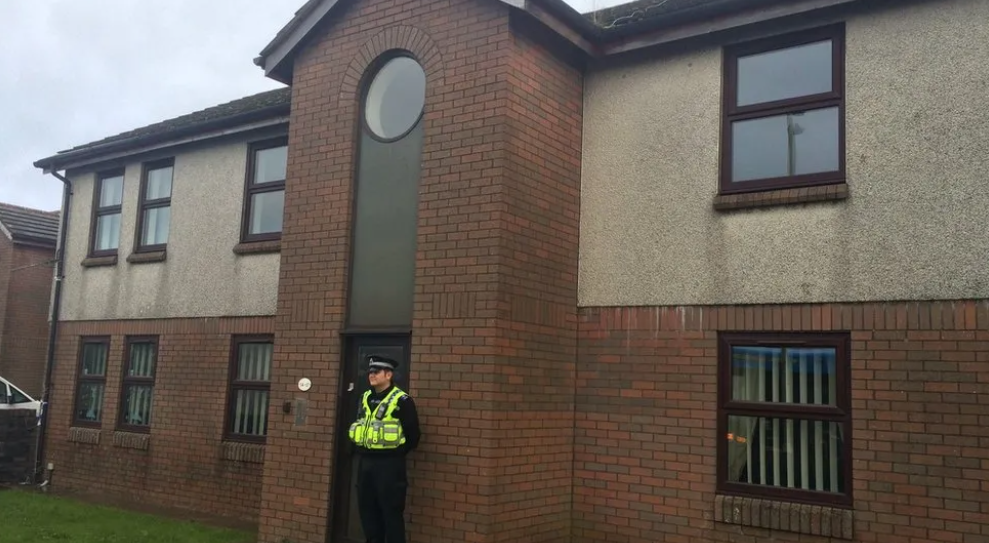
The back garden of the Trem y Cwm flats, pictured here in 2015, was where the body was discovered
When the friends started cutting the package open, they got fluid on their hands - and phoned the police.
PC Joy Nicholls of South Wales Police, one of the first on the scene, said the smell was "overwhelming".
"It obviously wasn't a medical skeleton," she told the documentary.
A pathologist suspected the body, which had been wrapped in up to 8in (20cm) of carpet and plastic, was weeks or months old.
They concluded that it was that of a man, aged in his 40s, who had died as a result of blunt-force trauma.
Ms James identified Leigh Sabine, a previous tenant of the flats, who had died one month earlier.
She said Mrs Sabine was the person who had told her that the package contained a medical skeleton.
But little was really known about Mrs Sabine - an "eccentric" woman who had told locals a number of stories about her past, including that her husband had left her.
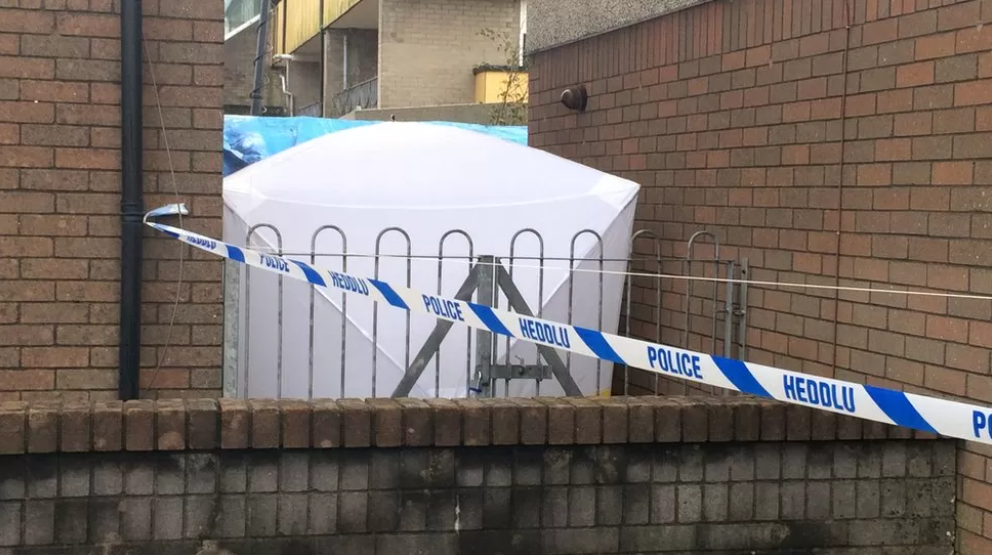
A police tent surrounds where Mr Sabine's body was discovered in 2015
Lynne Williams, Mrs Sabine's carer who looked after her until she died from terminal cancer in 2015, told the documentary: "Leigh was always talking about a medical skeleton.
"On numerous occasions she wanted it moved and I would be like 'oh gosh, I really haven't got time to do things like that'.
"We were sitting around the table having a cup of tea and she mentioned the skeleton again and I said 'well I hope it's not a bleeding real one' and she went 'you never know Lynne'."
The police began to focus on Mrs Sabine's ex-husband, John Sabine.
The couple had moved to the flat together in 1997 and Mr Sabine appeared on the voting register and tenancy agreement - but nowhere else.
They soon discovered that the dead body was in fact Mr Sabine, and an inquest in 2016 concluded that he was unlawfully killed - most likely by his late wife.
It was suggested, though never proven, that she had used an ornamental frog to inflict his fatal head injuries.
'You never knew if she was telling the truth'
Mr Sabine had not been seen for 18 years at the time his body was uncovered, and it is still unclear when exactly he died.
The inquest was told that Mr Sabine's body was well-preserved because of a process known as "chemical mummification", which can persist for years or even centuries.
"Precisely what happened and the circumstances will sadly never totally be known," coroner Andrew Barkley said.
The hearing was told Mrs Sabine admitted to killing her husband during a phone call with her friend Valerie Chalkley in 1997.
In written evidence, Ms Chalkley said: "The problem with [Mrs Sabine] was you never knew if she was telling the truth or not."
In a further twist, it also emerged that John and Leigh Sabine had previously been investigated by police in New Zealand for abandoning their five children in the 1960s.
Jane Sabine, second youngest daughter of the Sabines, appeared at the end of the first episode of The Body Next Door, where she said: "I have no doubt my mother was capable of murder."
The first episode of the Body Next Door, a three-part Sky Documentaries series, aired on Sunday at 21:00 BST.
Related topics
- Published14 December 2015
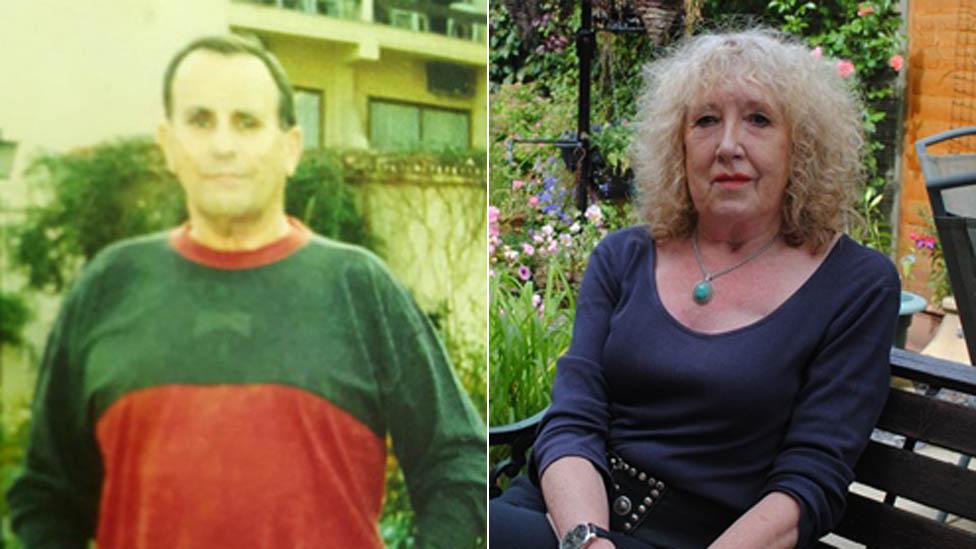
- Published19 May 2016
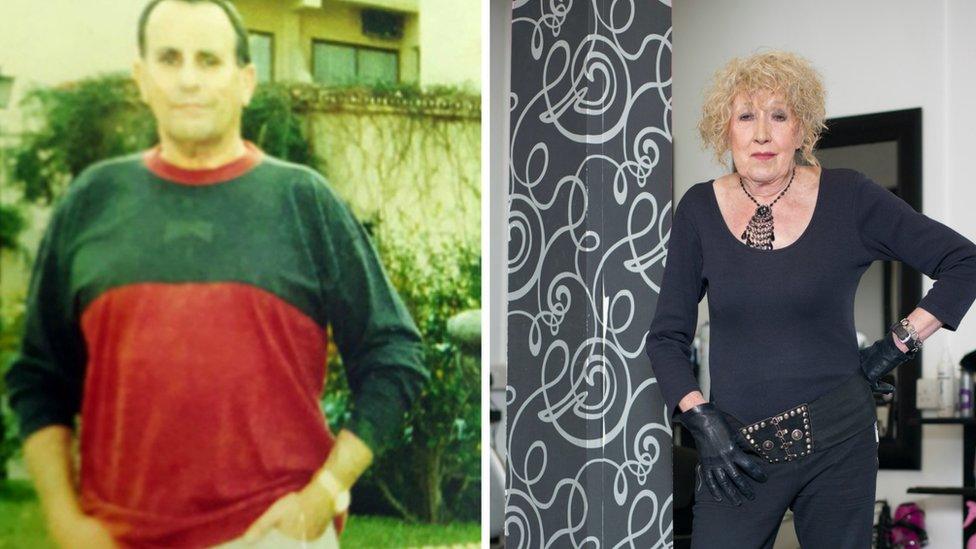
- Published11 December 2015
